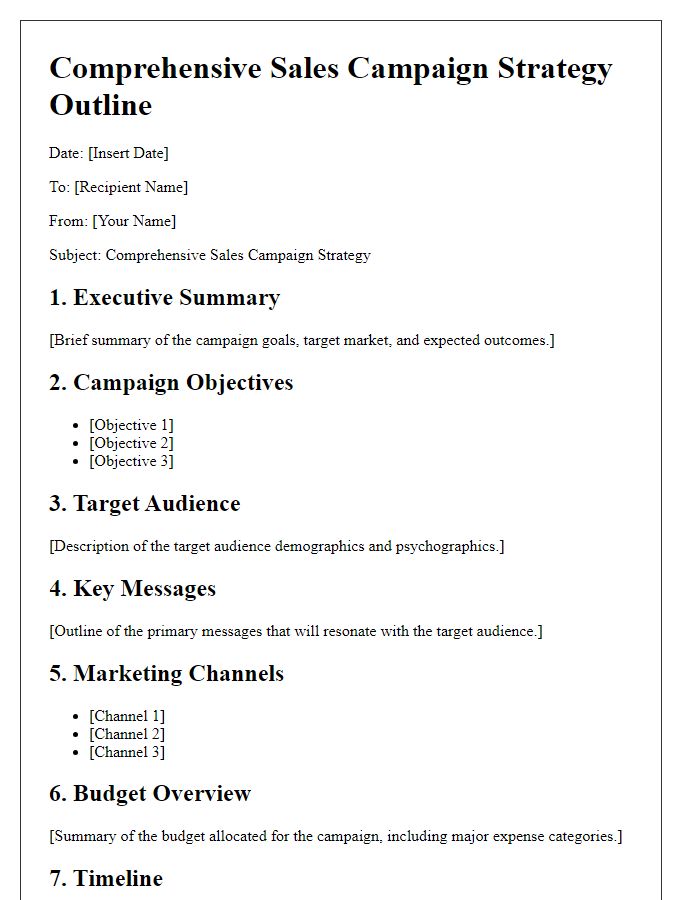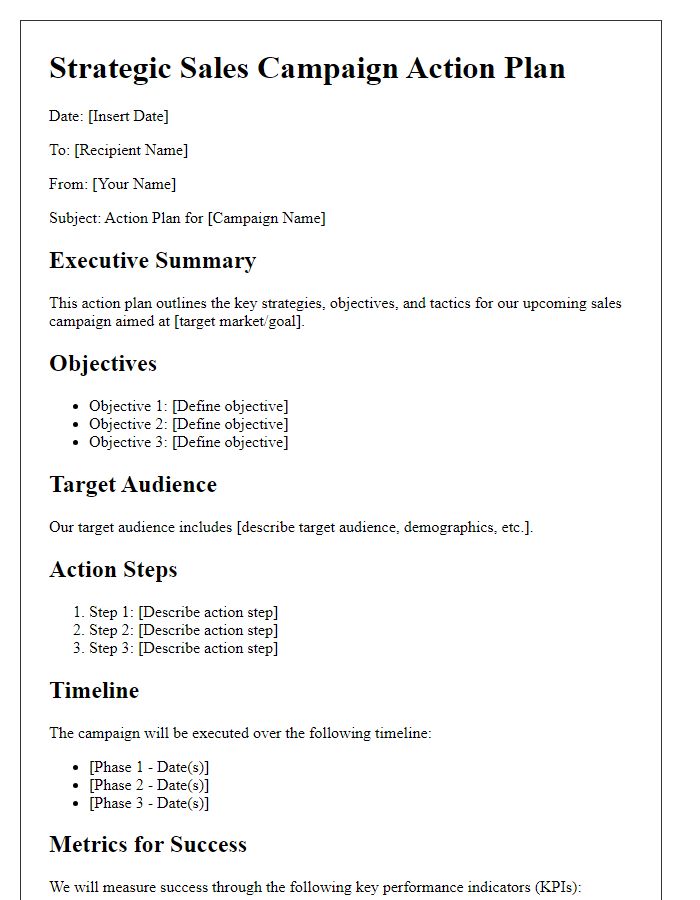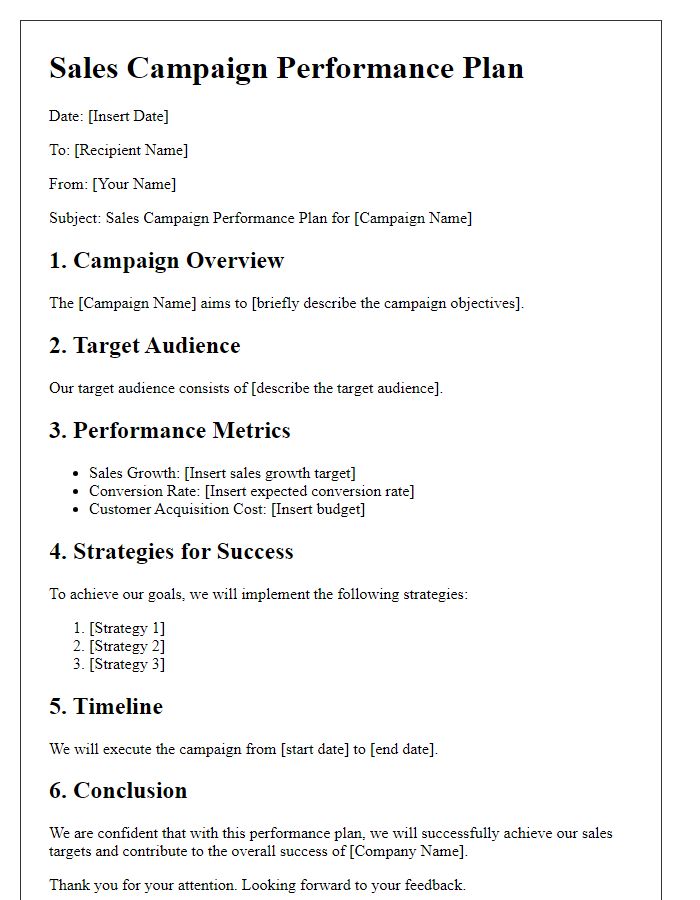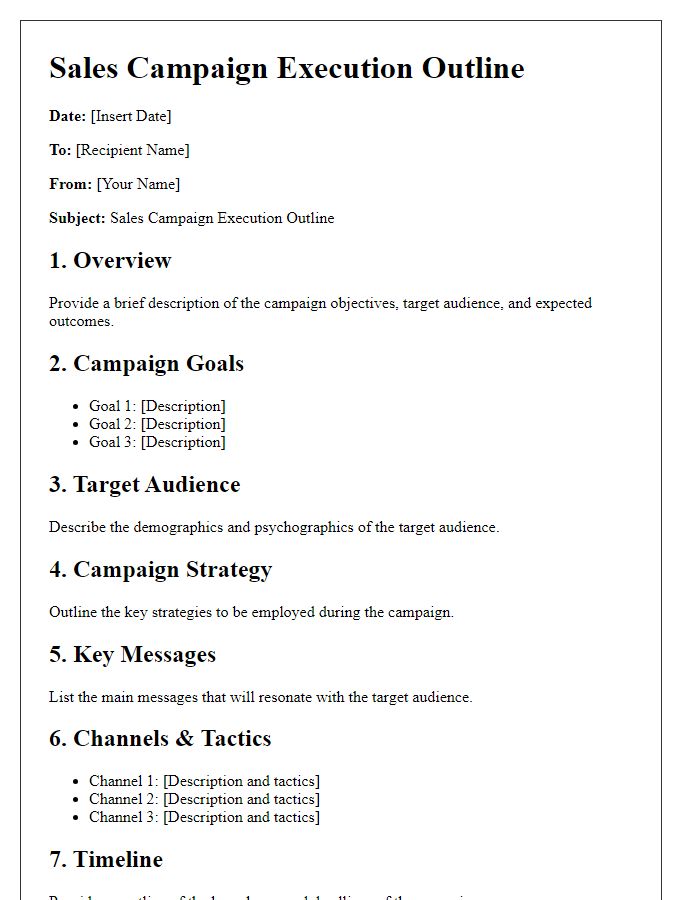Are you ready to supercharge your sales campaign? In today's competitive market, having a solid strategy is crucial for achieving your goals and standing out from the crowd. From identifying your target audience to crafting compelling messages and utilizing the right channels, each step plays a significant role in driving success. Join us as we delve deeper into these essential elements and explore actionable insights that can elevate your sales efforts!

Target Audience and Market Segmentation
Understanding target audiences is essential for effective sales campaign strategies. Key demographics such as age, income, education level, and geographic location shape buyer behavior and preferences. Market segmentation involves categorizing this diverse population into distinct groups, allowing tailored marketing messages. Psychographics, including lifestyle choices, values, and interests, provide deeper insights into consumer motivations. Specific tactics like persona development can hone in on ideal customers, increasing engagement and conversion rates. Utilizing data analytics can pinpoint market trends and behaviors, facilitating informed decisions based on customer insights. Identifying channels--such as social media platforms like Instagram and Facebook--is vital for reaching these segments efficiently.
Unique Selling Proposition (USP) and Key Messages
Developing a successful sales campaign strategy relies heavily on a well-defined Unique Selling Proposition (USP) that sets products apart in a competitive market. The USP should clearly articulate the distinct value, such as eco-friendliness, that a product offers compared to other options within the same industry, such as biodegradable materials. Key messages must communicate essential benefits concisely, such as cost savings of 20% over traditional products, innovative technology enhancements, or exclusive features like a lifetime warranty. Targeted messaging aimed at specific demographics, such as millennials interested in sustainability or businesses seeking reliable solutions, should be utilized. Engaging storytelling that highlights real-life applications of the product can create an emotional connection with the audience, further reinforcing the campaign's core messages.
Channels and Communication Platforms
Effective sales campaigns rely on diverse channels and communication platforms to reach target audiences. Digital marketing channels such as email campaigns (utilizing platforms like Mailchimp or Constant Contact) allow for personalized outreach to potential customers, increasing engagement rates. Social media platforms, including Facebook, Instagram, and LinkedIn, serve as powerful tools for brand visibility and interaction, with over 3.6 billion users globally. Additionally, traditional methods like direct mail can complement digital strategies, adding a personal touch that stands out in an increasingly digital landscape. Utilizing webinars and virtual events can foster connections with prospects and provide valuable information, while customer relationship management (CRM) tools like Salesforce streamline communication and track interactions for more targeted follow-ups. A multi-channel approach ensures maximum reach and leverages different platforms' individual strengths for effective message delivery.
Budget Allocation and Resource Planning
A well-structured sales campaign strategy must include clear budget allocation and precise resource planning for optimal execution and measurable results. The budget allocation should delineate specific financial provisions across various segments such as digital advertising (targeting platforms like Google Ads and Facebook Ads), traditional marketing (including print materials and event sponsorships), and sales team training (for enhancing skills through workshops). Resource planning involves assessing available human resources, such as sales representatives and marketing personnel, as well as technological tools, like CRM systems (Customer Relationship Management software) and analytics platforms (for tracking performance metrics). Establishing contingency funds ensures adaptability during unforeseen challenges in the market landscape. Utilizing campaign dashboards can yield real-time insights, driving informed decisions throughout the sales period.
Performance Metrics and Evaluation Methods
A sales campaign's performance metrics (quantifiable measures used to gauge success) are critical for assessing effectiveness. Key indicators include conversion rates (percentage of leads turning into customers), average deal size (average revenue per closed deal), and customer acquisition cost (total cost of acquiring a new customer). Evaluation methods encompass A/B testing (comparing two versions of a campaign to determine which performs better) and post-campaign analysis (assessing overall results after campaign completion). Metrics should also involve customer feedback scores (assessments of customer satisfaction), sales growth (increase in revenue over a specific period), and return on investment (ROI) (measure of profitability). Collecting data through tools such as Google Analytics and CRM systems (Customer Relationship Management) facilitates ongoing improvements in campaign strategies.













Comments